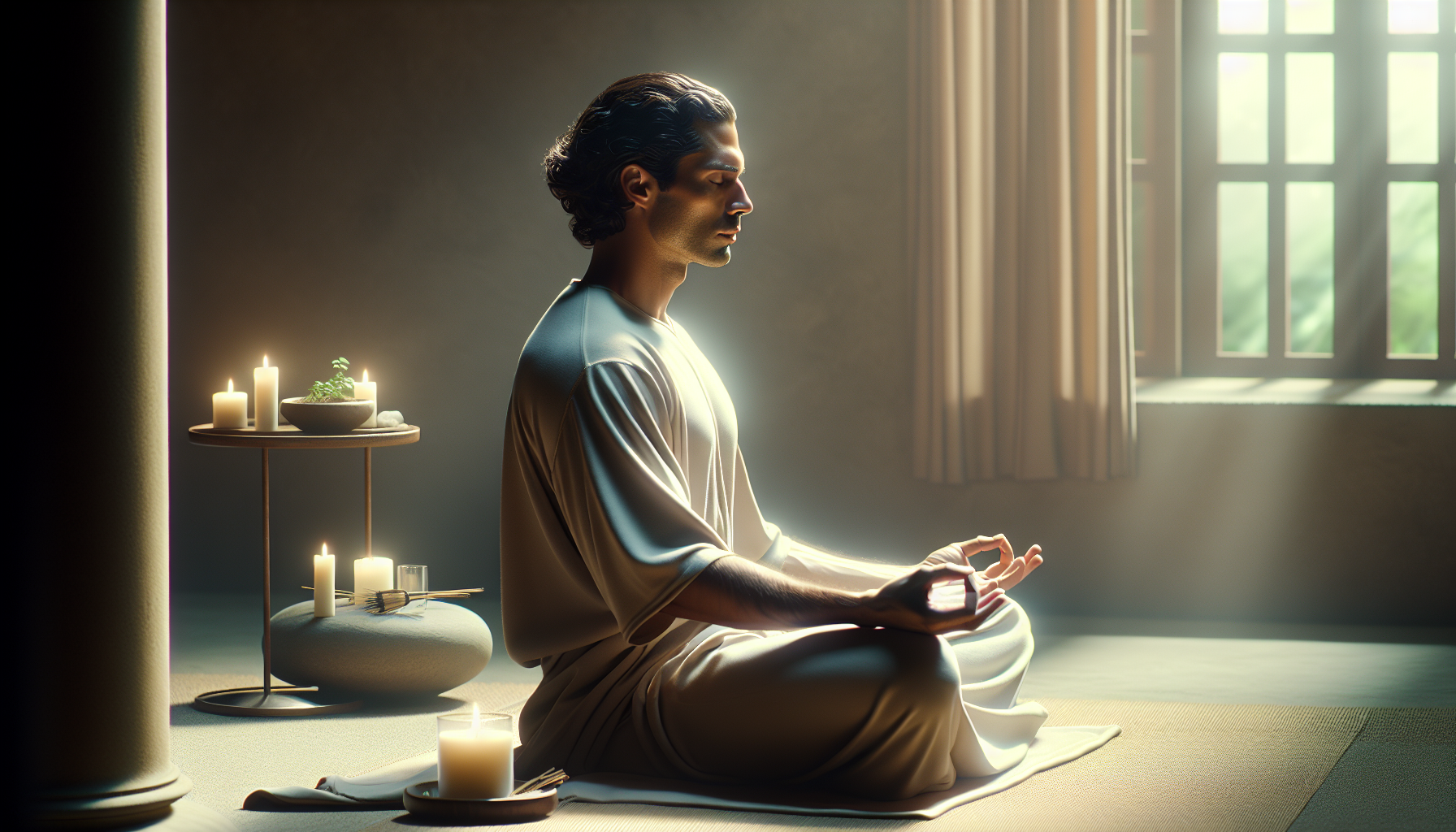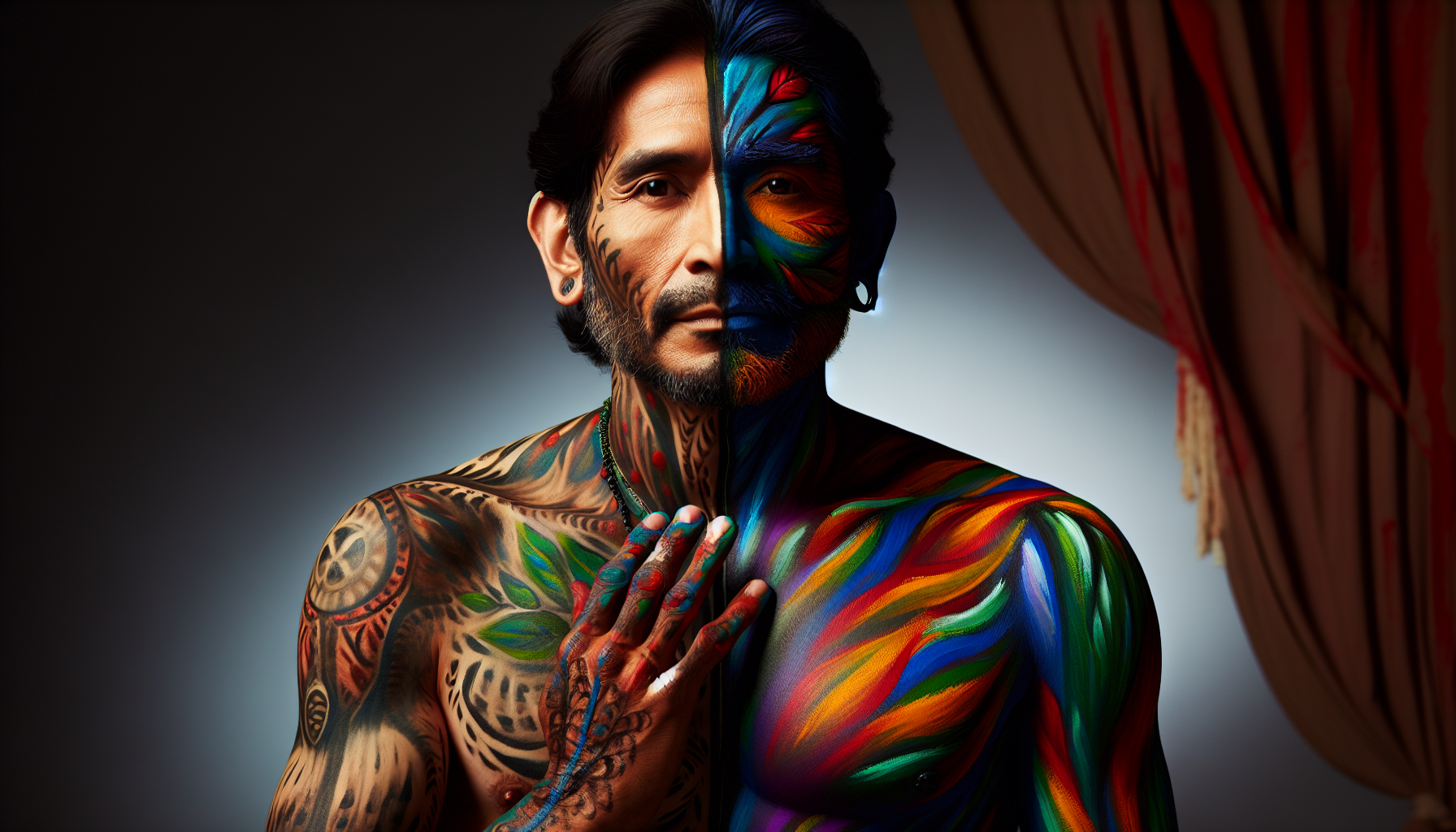Guilt is a universal emotion, a shadow that lingers in the corners of our minds, often creeping in at the most unexpected moments. It’s that subtle gnawing feeling in your chest when you remember a mistake or a misstep, the weight that seems to anchor you in a sea of self-doubt. Guilt can be both a fleeting inconvenience and a profound psychological burden. Yet, amid its oppressive nature lies a profound opportunity for growth and transformation. This article explores the fascinating intersection of guilt and ritual, offering a pathway to not only understand but also cleanse your conscience through time-honored practices. 🌿
From ancient purification ceremonies to modern mindfulness techniques, humans have always sought methods to navigate the complexities of guilt. Rituals, in particular, offer a structured means of expression and release. Whether it’s through the symbolic washing of hands or the silent introspection of meditation, rituals provide us with a tangible way to confront and alleviate our guilt. In this exploration, we will delve into how these practices have evolved across cultures and eras, retaining their essence as potent tools for psychological relief. We’ll uncover why rituals have persisted as a cornerstone of human experience and how they can serve as a compass guiding us toward emotional liberation.
In the forthcoming sections, we will embark on a journey that intertwines history, psychology, and spirituality. We’ll begin by unraveling the roots of guilt, examining its origins and how it manifests in our daily lives. By understanding guilt’s underlying mechanisms, we can better appreciate why it holds such power over us. Next, we’ll explore a variety of rituals, both ancient and contemporary, that have been employed to mitigate guilt. From indigenous purification ceremonies to the quiet contemplation practices of Eastern philosophies, each ritual offers unique insights into the human psyche and the universal quest for inner peace.
Finally, this article will provide practical guidance on how to incorporate these rituals into your own life. You’ll discover that guilt, while often seen as a negative force, can be harnessed to fuel personal growth and transformation. By embracing rituals as a means of purification, we open the door to a renewed sense of self and a lighter, more compassionate way of being. As we journey through this exploration, you’ll find that cleansing your conscience is not just about releasing the weight of guilt, but about reclaiming your power, understanding your emotions, and ultimately, finding peace in the imperfections of the human experience. ✨
The Significance of Rituals in Human Life
Rituals have been an integral part of human life since ancient times, serving as powerful tools for emotional, spiritual, and psychological transformation. These ceremonies, whether religious, cultural, or personal, provide structure, meaning, and a sense of continuity in our lives. Their significance lies in their ability to help individuals connect with themselves, others, and the larger universe. Rituals can range from the grandiose, such as wedding ceremonies, to the simple daily routines that set the tone for our day. By engaging in rituals, individuals often find a source of comfort and a way to process emotions, such as guilt, effectively.
In many cultures, rituals are designed to address the complexities of human emotions, including guilt. This feeling can be overwhelming and paralyzing, hindering personal growth and well-being. Rituals provide a structured approach to acknowledging and releasing guilt, facilitating emotional healing. For example, confession in religious contexts is a ritualized form of expressing remorse and seeking forgiveness. Similarly, secular rituals such as journaling or meditative practices can offer individuals a safe space to explore their feelings and work towards self-forgiveness. By participating in these rituals, individuals often find a renewed sense of clarity and peace.
Furthermore, rituals play a crucial role in marking transitions and changes in life, helping individuals navigate through different phases. Whether it’s a rite of passage, a graduation ceremony, or a retirement party, rituals acknowledge the significance of these moments and provide a framework for embracing change. This can be particularly beneficial when dealing with guilt associated with past actions, as rituals can symbolize a fresh start or a new chapter in life. Through the power of rituals, individuals can transform guilt into an opportunity for growth and self-improvement.
How Rituals Aid in Guilt Purification
The process of guilt purification through rituals involves several key elements that work together to facilitate emotional healing. One of the primary functions of rituals is to create a sacred space where individuals can safely confront their feelings without judgment. This space, whether physical or metaphorical, provides a sense of security and allows for honest self-reflection. In this environment, individuals are encouraged to explore the root causes of their guilt and to articulate these feelings, either verbally or through symbolic actions. This act of expression is a crucial step in the purification process, as it helps to externalize and release the burden of guilt.
Moreover, rituals often involve elements of symbolism and metaphor, which can be powerful tools for emotional processing. By engaging in symbolic actions, such as lighting a candle to represent the release of guilt or writing a letter of apology and then burning it, individuals can physically manifest their intentions to forgive themselves and move forward. These symbolic gestures provide a tangible representation of the internal transformation taking place, reinforcing the individual’s commitment to letting go of guilt.
Another important aspect of rituals is the element of repetition. Repeated actions, chants, or prayers can have a meditative effect, helping to calm the mind and focus the individual’s intentions. This repetition not only reinforces the desired outcome but also serves as a reminder of the individual’s commitment to personal growth and healing. By consistently engaging in these ritualistic practices, individuals can cultivate a sense of discipline and mindfulness, which are essential for long-term emotional well-being.
Types of Rituals for Guilt Purification
There are various types of rituals that individuals can incorporate into their lives to aid in guilt purification. These rituals can be broadly categorized into religious, cultural, and personal practices, each offering unique benefits and approaches to emotional healing. Religious rituals often involve established practices and traditions, providing a structured framework for individuals seeking forgiveness and redemption. For example, the sacrament of confession in Christianity allows individuals to verbally express their remorse to a priest, who offers absolution and guidance. Similarly, in Buddhism, the practice of meditation and chanting can help individuals cultivate compassion and self-forgiveness.
Cultural rituals, on the other hand, may be less formalized but equally effective in addressing guilt. These rituals often involve community participation and collective support, fostering a sense of belonging and shared experience. For instance, in some Indigenous cultures, cleansing ceremonies using elements such as water, smoke, or herbs are performed to purify the spirit and release negative emotions. These communal rituals emphasize the interconnectedness of individuals and the importance of healing as a collective process.
Personal rituals are highly individualized and can be tailored to suit the specific needs and preferences of the individual. These rituals may include activities such as journaling, where individuals can write down their thoughts and feelings as a way to process and release guilt. Similarly, creating art, music, or engaging in physical activities such as yoga or tai chi can serve as powerful outlets for emotional expression. Personal rituals provide the flexibility to incorporate elements that resonate with the individual, making them a highly effective tool for guilt purification.
The Psychological Benefits of Rituals
Engaging in rituals for guilt purification offers a multitude of psychological benefits that contribute to overall well-being. One of the most significant advantages is the sense of control and agency that rituals provide. When individuals are able to consciously engage in activities that address their emotions, they often experience a sense of empowerment and autonomy. This is particularly important when dealing with guilt, as feelings of helplessness and shame can be debilitating. By taking deliberate action through rituals, individuals can regain control over their emotional state and take positive steps towards healing.
Rituals also serve as a powerful tool for stress reduction and emotional regulation. The structured nature of rituals provides a sense of predictability and stability, which can be comforting in times of emotional turmoil. By engaging in familiar and repetitive actions, individuals can soothe their nervous system and reduce stress levels, promoting relaxation and emotional balance. This calming effect is essential for effectively processing and releasing guilt, as it allows individuals to approach their emotions with clarity and compassion.
Furthermore, rituals can enhance self-awareness and introspection, leading to greater personal insight and understanding. By creating a dedicated space for reflection and exploration, rituals encourage individuals to delve deeper into their emotions and thoughts. This increased self-awareness can lead to the identification of underlying patterns or beliefs that contribute to feelings of guilt. By gaining a deeper understanding of oneself, individuals are better equipped to address the root causes of their guilt and make meaningful changes in their lives.
Table: Comparison of Different Types of Rituals
| Type of Ritual | Characteristics | Benefits |
|---|---|---|
| Religious Rituals | Structured, community-oriented, often involve prayer or confession | Provides spiritual guidance, offers a sense of forgiveness and redemption |
| Cultural Rituals | Less formalized, involve community participation, use of symbolic elements | Fosters a sense of belonging, emphasizes healing as a collective process |
| Personal Rituals | Highly individualized, can include journaling, art, physical activities | Offers flexibility, tailored to individual needs, promotes self-expression |
Take a moment to reflect on the types of rituals that resonate most with you. Consider how incorporating these practices into your life could aid in the purification of guilt and enhance your overall well-being. If you’re interested in learning more about the power of rituals, watch the insightful video linked below.
Watch “The Healing Power of Rituals” on [Channel Name]
Creating Your Own Rituals for Guilt Purification
Designing personal rituals for guilt purification allows individuals to tailor practices that align with their unique preferences and needs. The process of creating a ritual involves thoughtful consideration of various elements, such as setting, actions, and intentions. One of the first steps in creating a ritual is to establish a dedicated space that is conducive to introspection and reflection. This space can be as simple as a quiet corner in your home or a natural setting that brings you peace and tranquility.
Next, consider the actions or symbolic gestures that will form the core of your ritual. These actions should be meaningful to you and serve as a representation of your intentions to release guilt. For example, you might choose to write a letter to yourself, expressing forgiveness and compassion, and then ceremonially burn it as a symbol of letting go. Alternatively, you might incorporate elements of nature, such as stones or water, to represent the cleansing and purifying aspects of your ritual.
Intention setting is another crucial component of a successful ritual. Clearly articulating your intentions helps to focus your mind and energy on the desired outcome. This can be done through verbal affirmations, silent reflection, or even through creative expressions such as drawing or painting. By clearly defining your intentions, you create a powerful framework for transformation and healing. As you engage in your ritual, allow yourself to be fully present in the moment, embracing the emotions that arise and releasing them with each symbolic action.
- Establish a dedicated space for your ritual.
- Select meaningful actions or symbolic gestures.
- Set clear intentions for your ritual.
Creating and practicing personal rituals for guilt purification can be a deeply transformative experience. By engaging in these practices regularly, you cultivate a sense of mindfulness and self-compassion, empowering yourself to release guilt and embrace a life of emotional freedom and well-being. Remember, the most important aspect of any ritual is that it resonates with you personally and serves as a tool for healing and growth.

Conclusion
In concluding our exploration of the profound theme of “Cleanse Your Conscience: The Power of Rituals for Guilt Purification,” we’ve traversed an intricate landscape that marries psychology, spirituality, and human behavior. Throughout the article, we delved into the multifaceted nature of guilt and how it often acts as both a guide and a burden in our lives. We examined the psychological underpinnings of guilt, understanding it as a complex emotion that, when unaddressed, can lead to a cascade of negative mental and physical health outcomes.
The central focus of our discussion was on the transformative power of rituals as a means to alleviate and purify guilt. We highlighted how rituals, whether rooted in religious traditions or personalized practices, serve as a conduit for emotional release and cognitive restructuring. By engaging in rituals, individuals can externalize their inner turmoil, granting themselves permission to forgive, let go, and move forward with a renewed sense of peace and clarity.
Several key points were emphasized throughout the article:
1. **The Nature of Guilt**: We explored how guilt is a natural human emotion that arises from perceived moral transgressions. It serves as an internal regulatory mechanism but can become debilitating if left unchecked.
2. **Psychological Impact**: Guilt’s psychological impact can lead to anxiety, depression, and a diminished sense of self-worth. Understanding its effects is crucial for addressing it effectively.
3. **Rituals as a Tool for Healing**: We discussed various types of rituals, from traditional religious ceremonies to modern personalized practices, that help individuals process and release guilt. Rituals provide a structured environment for reflection, offering symbolic closure and a sense of renewal.
4. **Cultural and Personal Significance**: The article highlighted the cultural importance of rituals across different societies and how they serve as communal acts of solidarity and personal journeys of introspection.
5. **Practical Applications**: We provided practical advice on how to create and implement personal rituals for guilt purification, emphasizing the importance of intention, symbolism, and mindfulness in these practices.
The importance of this theme cannot be overstated. In a world that often prioritizes external achievements and material success, the internal journey of emotional and spiritual cleansing is sometimes neglected. By acknowledging and addressing guilt through rituals, individuals can achieve a deeper sense of self-awareness and emotional resilience.
As we wrap up, we encourage you to reflect on the role guilt plays in your own life and consider how rituals might assist you in navigating this complex emotion. Whether you choose to engage in established religious practices or create your own personal rituals, the act of consciously addressing guilt can be both liberating and empowering.
Furthermore, we invite you to share your thoughts and experiences. Have you ever participated in a ritual that helped you overcome feelings of guilt? How did it impact your mental and emotional well-being? Your insights could inspire others on their journey to healing.
Sharing this article with friends and family can also foster meaningful conversations about guilt and the paths to purification. By spreading awareness, we collectively contribute to a more empathetic and understanding world 🌍.
Finally, if you’re interested in exploring this topic further, here are some resources that provide additional insights into the psychology of guilt and the power of rituals:
– [Psychology Today on Guilt](https://www.psychologytoday.com/us/basics/guilt)
– [The Role of Rituals in Mental Health](https://www.health.harvard.edu/mind-and-mood/the-comforting-power-of-repetitive-ritual)
Let us embrace the power of rituals as a tool for transformation and healing. By doing so, we take a significant step towards leading a life of greater emotional balance and fulfillment. 🌟
Toni Santos is a visual storyteller and cognitive explorer whose work delves into the mental landscapes of ancient cultures—revealing how different civilizations perceived reality, memory, and meaning long before modern psychology existed. Through symbolic imagery and narrative inquiry, Toni brings to life the divergent ways of thinking that shaped lost worlds.
His creative path is guided by a fascination with non-linear logic, oral cosmologies, and the mythic frameworks that once guided decision-making, emotion, and identity. From memory temples carved in stone to visual languages encoded in textiles, every piece Toni creates reflects the vast cognitive diversity of the human story.
With a foundation in visual design and cultural semiotics, Toni blends analytical depth with artistic expression. His work goes beyond historical reconstruction—it reawakens the embodied, intuitive, and ritual-based intelligence of ancient minds, inviting us to question the assumptions of modern thought.
As the mind behind Vizovex, Toni curates visual studies, essays, and immersive content that explore forgotten epistemologies—ways of knowing that connected people to myth, land, and each other in profoundly different ways.
His work is a tribute to:
The symbolic intelligence of pre-modern cultures
The neural diversity embedded in ancient rituals and storytelling
The deep memory systems that shaped identity and perception
Whether you’re a researcher, an artist, or a seeker of hidden wisdom, Toni invites you to enter a space where cognition is culture, and where the past speaks through signs, cycles, and symbols—one myth, one memory, one mind at a time.





